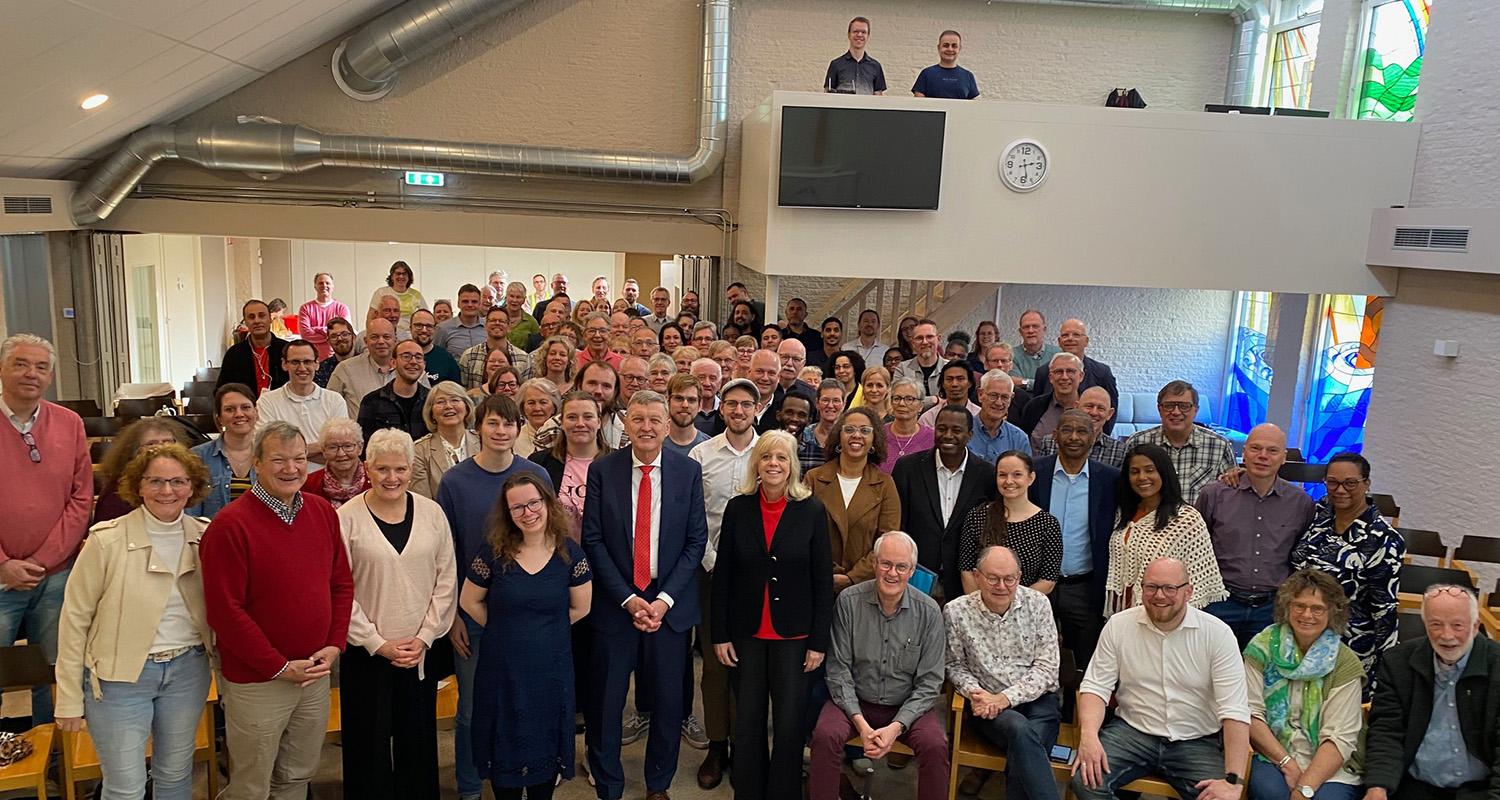
Benelux District becomes newest district on Eurasia Region

In late March, the 49th assembly of the Netherlands District began with the first resolution: a vote to become the Benelux District, which was unanimously accepted. The historic assembly continued, marking the first Benelux District assembly, with delegates from Luxembourg warmly welcomed.
“Last year, it seemed that the time was ripe to connect the Luxembourg church into the Dutch district with its church plant in Belgium," said Antonie Holleman, Benelux District superintendent and Northern Europe field strategy coordinator. "These three countries collaborate governmentally as the Benelux, so we just used this existing name.”
When the Church of the Nazarene was established in the Netherlands in 1967, it became part of the Middle European District, and soon a separate district was created: the Northwest European District, together with Denmark. In 1976, the Netherlands became a separate district, and in 1995, it became a Phase 3 district.
The Netherlands District has had a long history of reaching out with the gospel and the message of scriptural holiness to those who are transitioning from other world areas into Northern Europe. Over recent years, there has been a growing number of migrant communities settling on the Netherlands District, many of which have become congregations: Portuguese, Farsi, Arabic, and Bulgarian. The district has embraced these developments and intentionally sought to welcome and integrate these diverse congregations into the existing structures.
There has also been an intentional move to focus on planting missional communities in the southern part of the country, which is traditionally Roman Catholic. One fruit of this development was the church plant of Belgium.
In addition, the growing Cape Verde and Portuguese congregations in Luxembourg are intentionally reaching across borders to connect with pastors, people, and churches in an effort to develop stronger ties and mutual fellowship.
Holleman continues, “This movement toward a culturally diverse and multilingual district means that we want to emphasize certain values more strongly in order to be one in Christ in our diversity. It is clearly understood that ‘we’ need to be intentional about:
· Unity. We will rid ourselves of everything that divides us to be one family of followers of Christ (Ephesians 2:11-15).
· Respect. We will esteem others better than ourselves, that we may learn from one another (Philippians 2:2-8).
· Justice. We will stand up for our brothers and sisters when they are wronged or in need (James 2:14-22).
· Integration. We will encourage and support each other to integrate well into our communities and the society in which we live.”
As district boundaries expanded, congregants had a deep desire to grow. That desire according to Holleman is “to be more intentional in becoming a multilingual and culturally diverse district, and with our identified values, make a statement and be a Christian witness in a time of suppression of people groups, discrimination, and racism.”
This story originally appeared in NMI Central, a weekly newsletter from Nazarene Missions International.
